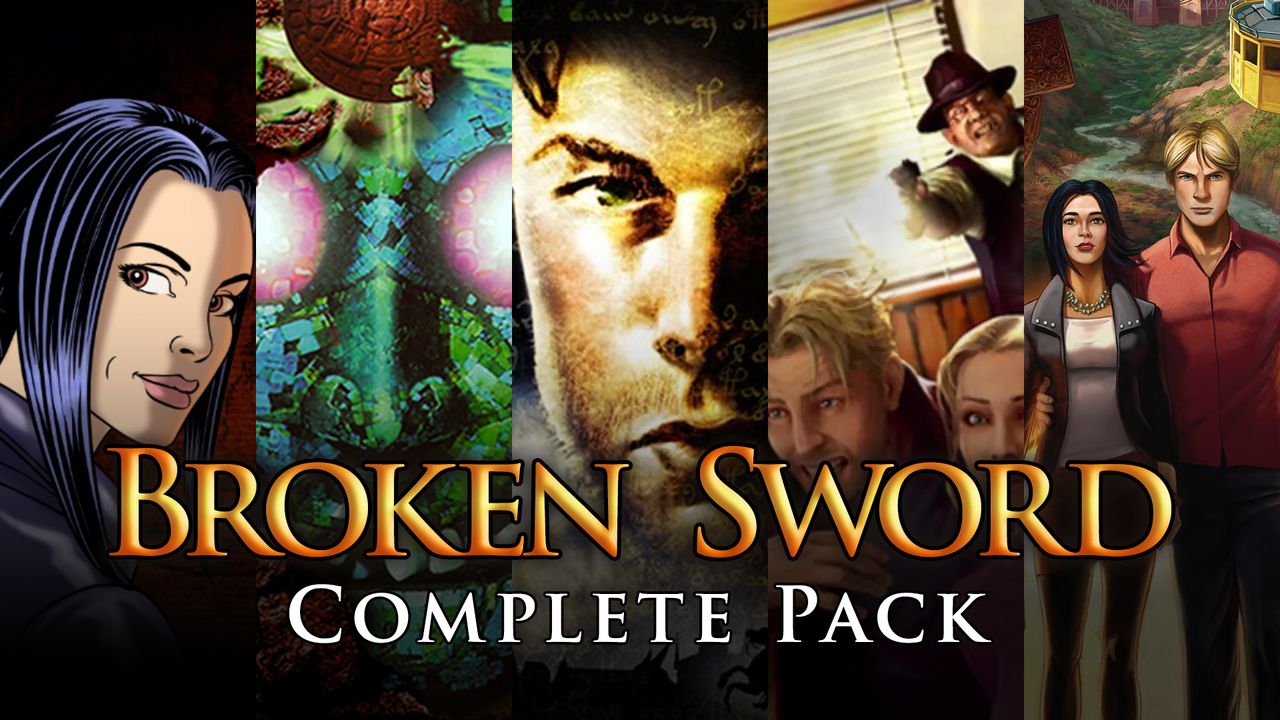Reviews
Broken Sword Collection Review: A Deep Dive into a Classic Adventure Series

Point-and-click adventure games have always had a special place in my heart. They brought stories to life at a time when gaming was still defining its identity. Among these, Broken Sword stands tall as one of the most influential and engaging franchises of its era. In this broken sword collection review, I’ll explore what it was like to revisit this beloved series from a modern perspective and whether the collection still lives up to its legendary reputation.
A Welcome Return to an Old Friend
When I launched the Broken Sword Collection, I was immediately hit with a wave of nostalgia. The opening scenes, especially in The Shadow of the Templars, transported me back to my teenage years, sitting in front of an old CRT monitor and trying to decipher cryptic clues late into the night. What sets this series apart even now is its sense of mystery, its strong characters, and its deep historical themes. These aren’t just adventure games—they’re thoughtful, layered stories wrapped in puzzles.
The collection includes four core entries: The Shadow of the Templars, The Smoking Mirror, The Sleeping Dragon, and The Angel of Death. These games follow the exploits of George Stobbart, an American tourist turned amateur detective, and his French journalist companion, Nico Collard. Each title expands the world and mythology of the series, while also experimenting with style, gameplay mechanics, and technology.
Rediscovering the Plotlines That Shaped a Genre
Thoughtful Storytelling and Engaging Dialogue
From the moment I began playing the first game, I was reminded of how Broken Sword never underestimates its audience. The narratives are rich, packed with historical conspiracies, philosophical themes, and snappy dialogue. Whether it’s the Templar legend or ancient civilizations, the plot always feels bigger than the characters—but never so big that you lose touch with the emotional stakes.
What impressed me most during this broken sword collection review was the quality of the writing. George’s dry humor and Nico’s sharp intellect still make a strong duo, and the conversations between them remain a highlight. The scripts are detailed and never fall into lazy exposition. Each character feels distinct, whether it’s a shady priest in Spain or a clueless tourist in the Caribbean.
Real-World Influences and Lore Depth
The series consistently draws from real-world history and mythology. This grounds the fantastical elements in a sense of realism, making the mysteries all the more intriguing. You feel like you’re participating in something bigger than yourself, unraveling age-old secrets that have been buried under layers of time and deception.
Even now, few games manage to combine entertainment and education the way Broken Sword does. It’s clear that the developers did their homework when crafting these stories. I found myself Googling obscure historical references and rereading in-game documents just to absorb more of the lore.
Gameplay: Traditional Roots and Bold Evolutions
The Golden Age of 2D Adventures
The first two games are classic examples of traditional point-and-click gameplay. They offer pixel-perfect exploration, clever puzzles, and inventory-based problem-solving. You interact with objects, talk to NPCs, and try to piece together logic puzzles that range from simple to devilishly difficult.
One thing that stood out during my playthrough was how intuitive the interface still feels. Despite the passage of time, the point-and-click mechanics remain smooth and responsive. There’s something immensely satisfying about using a random inventory item in just the right way after staring at a puzzle for ten minutes.
Shifting to 3D: A Mixed Transition
The Sleeping Dragon and The Angel of Death mark the series’ shift to full 3D graphics and direct control over characters. The change was jarring at first. Gone were the point-and-click controls; now I had to guide George manually through environments using a controller or keyboard. Initially, it felt clunky, especially during sections requiring quick timing or movement.
However, after spending some time adjusting, I began to appreciate the ambition behind the transition. The 3D environments allowed for more immersive set pieces and expanded the possibilities for environmental puzzles. These later games might not be as tight as the originals, but they brought a cinematic feel to the franchise that was impressive for its time.
Presentation: Sound, Graphics, and Atmosphere
Visual Style Through the Ages
Each entry in the collection offers a snapshot of the visual capabilities of its era. The first two games use hand-drawn backgrounds that remain beautiful and full of character. Their art style gives the feeling of walking through an animated graphic novel, which is something I still admire today.
In contrast, the 3D models in the later entries show their age. Characters can appear stiff, and animations aren’t as fluid as modern players might expect. Still, the environments are detailed, and the effort to recreate a sense of place—be it Cairo, Prague, or Glastonbury—is clear and commendable.
Audio That Enhances the Journey
No broken sword collection review would be complete without praising the audio design. The music, composed by Barrington Pheloung, adds emotional resonance to every major scene. Whether it’s a tense chase through catacombs or a quiet moment in a Paris café, the score perfectly complements the atmosphere.
The voice acting is another strong point. Performances are consistent across all four games, and the actors bring real depth to their characters. George’s sardonic wit and Nico’s passionate curiosity are captured flawlessly, making the dialogue feel natural rather than forced.
Why the Collection Still Matters
A History Lesson Disguised as a Game
What makes the Broken Sword Collection so relevant today is its intelligent approach to storytelling. While modern games often lean heavily into action or open-world exploration, this series encourages you to slow down and think. It rewards patience, observation, and attention to detail. It’s not just a game—it’s an experience that teaches you about art, religion, and history along the way.
Nostalgia Meets New Perspective
As someone who played these games during their original release, revisiting them with fresh eyes offered both a nostalgic joy and a deeper appreciation for their design. For new players, the collection serves as a perfect gateway into the world of classic adventures. For returning fans, it’s a reminder of a time when gaming dared to be intellectual and story-driven.
In writing this broken sword collection review, I realized that the series didn’t just entertain—it shaped how I think about game narratives. It was one of the first to show me that games could be smart, meaningful, and even profound.
Final Thoughts on the Broken Sword Collection Review
Spending time with the Broken Sword Collection was like reconnecting with an old friend—one who still has plenty of interesting things to say. The series may show its age in some areas, but its core strengths—writing, atmosphere, and character—are as strong as ever.
In a world of fast-paced shooters and endless battle royales, Broken Sword stands as a quiet monument to a different kind of gaming. It’s a series that respects the player’s intelligence and dares to weave complex narratives without handholding. If you’re a fan of adventure games or just curious about one of gaming’s most respected franchises, this collection is a treasure worth rediscovering.
Whether you’re uncovering the secrets of the Templars for the first time or reliving the journey with George and Nico, the Broken Sword Collection offers an experience that’s as captivating now as it was decades ago.










